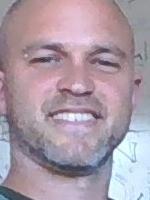

Web Applications for the Science of Sound and Music |
Participate and share : Poster
Dr. victor minces
Science and music have tons of connections. The web applications developed by our team allow students anywhere in the world to measure and creatively play with sound. Participants in this session will learn the basics of sound and play with the applications that all have an NGSS-aligned curriculum.
| Audience: | Curriculum/district specialists, Principals/head teachers, Teachers |
| Skill level: | Beginner |
| Attendee devices: | Devices useful |
| Attendee device specification: | Smartphone: Android, iOS, Windows Laptop: Chromebook, Mac, PC Tablet: Android, iOS, Windows |
| Participant accounts, software and other materials: | No materials are necessary. |
| Topic: | Online tools, apps & resources |
| Grade level: | 6-12 |
| Subject area: | Music, STEM/STEAM |
| ISTE Standards: | For Education Leaders: Equity and Citizenship Advocate
Knowledge Constructor
|
Through this workshop participants will learn to use web applications for exploring and creating sound and music. The web applications are free and can be used in any computer or Chromebook anywhere, see www.listeningtowaves.com/sound-exploration. The web applications replicate ubiquitous tools used in STEM laboratories, and expand those tools to allow students to have fun playing with sound. The applications have an associated NGSS aligned curriculum and are appropriate for grades 6-12. This is a very hands-on workshop in which participants will learn as students. Further, they will be able to immediately take the resources to their classrooms.
An experience including these tools and carried out in low-income and underrepresented schools was shown to significantly improve students' attitudes toward science (and the students loved it!). See supporting research.
Introduction (5 minutes). Session leader and participants briefly introduce themselves and their educational interests.
What is sound (5 minutes). Participants make a very simple experiment yelling into a piece of paper and use the results to discuss and refine their ideas of sound.
Speakers, frequency, amplitude, pitch, scales. (10 minutes) Participants use the Signal Generator web application to explore the relationships between frequency, pitch, amplitude, and volume. And to discuss how electronic sound and music are created.
The limits of perception. (10 minutes) Participants use the signal generator tool to make an experiment measuring each others' frequency hearing range.
Sound hunting, measuring sound. (15 minutes) Participants use the oscilloscope tool to collect sounds in the environment, loop them, transform them, save them, and share them with the community. Further, participants discuss how microphones work and how music is produced.
Resources overview (5 minutes). Participants are guided through our website so they can better implement the program in their schools. This includes links to lesson plans, teacher slides, student worksheets, application tutorials, and sound career awareness documentaries.
Questions and extra time (10 minutes).
Minces, V., A. Booker and A. Khalil (2021). Listening to waves: Engaging underrepresented students through the science of sound and music. Connected Science Learning 3
Akshay, N., Minces, V., Vazhayil, A., Gopalasamy, V., & Bhavani, R. R. (2020). There’s Data all around you : Improving data literacy in high schools through STEAM based activities. Proceedings of Fablearn Asia.
Minces, V. H. (2021), Developing and Popularizing STEM Online Tools: The Case of 'Listening to Waves' Tools for the Science of Music Paper presented at 2021 ASEE Virtual Annual Conference Content Access, Virtual Conference. 10.18260/1-2--36938

Victor Minces is the principal investigator and founder of Listening to Waves, a program that uses web applications and hands on activities to engage students in science through its connections with music. Dr. Minces studied physics at the University of Buenos Aires and obtained his PhD in computational neuroscience at the University California, San Diego, where he researched the cognitive and neural underpinnings of music performance. He is also a sound artist.
Introducing Parent Connection in Microsoft Teams
Smart Buy: The Good, Bad, and Ugly in Edtech Selection
Using Google Slide Templates to Gamify Your Lessons